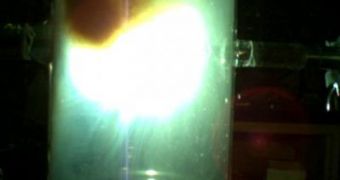A lot of people have thankfully heard of carbon nanotubes in recent years, and most of them know that they are incredibly small constructs, built at the nanoscale, and which are made of single layers of carbon atoms, stuck together in the shape of tubes. But not many people know that these tubes, also known as buckytubes, also come shaped like spheres – in constructs known as buckyballs – and that the class of compounds to which both these materials belong is called fullerene. These carbon allotropes can be filled with radioactive materials, and used with radiation therapy but, until now, no one knew how.
That all changed when scientists at Virginia Tech developed a remote-controlled, closed system for filling the fullerenes with all sorts of dangerous materials, all done completely automatically, and without any human intervention. In charge of the cooperation were VT Chemistry Professor Harry C. Dorn, the VT Emory and Henry College Chemistry Professor James Duchamp, as well as Virginia Commonwealth University School of Medicine Division of Radiation Physics and Biology Chair and Professor Panos Fatouros.
An earlier version of their innovation was presented at the NCI Alliance for Nanotechnology in Cancer Investigators Meeting, held in September 2008. Since that time, a patent application on the new technology has also been filed with the appropriate authorities. The method makes use of graphite and lutetium (Lu) rods, about three times as thick as a pencil each, which are pushed through a jar-like enclosure, towards an energy source at the other end. As this happens, the rods burn, and the interior of the jar becomes laden with ash. A small nozzle descends from a special enclosure and forces the ash towards the end of the jar, where it's passed through a filter.
The end-product contains Lu atoms bound to nitrogen inside fullerenes. The entire compound is then passed through a device that is capable of discovering and trapping the fullerenes that are empty and without the Lu element. The resulting beer-colored solution is then evaporated, and the chemical compound hydroxyl is then added, so as to make it soluble in biofluids.
“The advantage of the metal cage is we can control where it goes biologically,” Dorn explains. Fatouros adds that, “We believe it will mean fewer side effects with better targeted localization, but that remains to be tested. Another advantage is we can deliver other materials inside the fullerene with the 177Lu – such as a targeting agent (interleukin-13) and an MRI contrast agent.”

 14 DAY TRIAL //
14 DAY TRIAL //